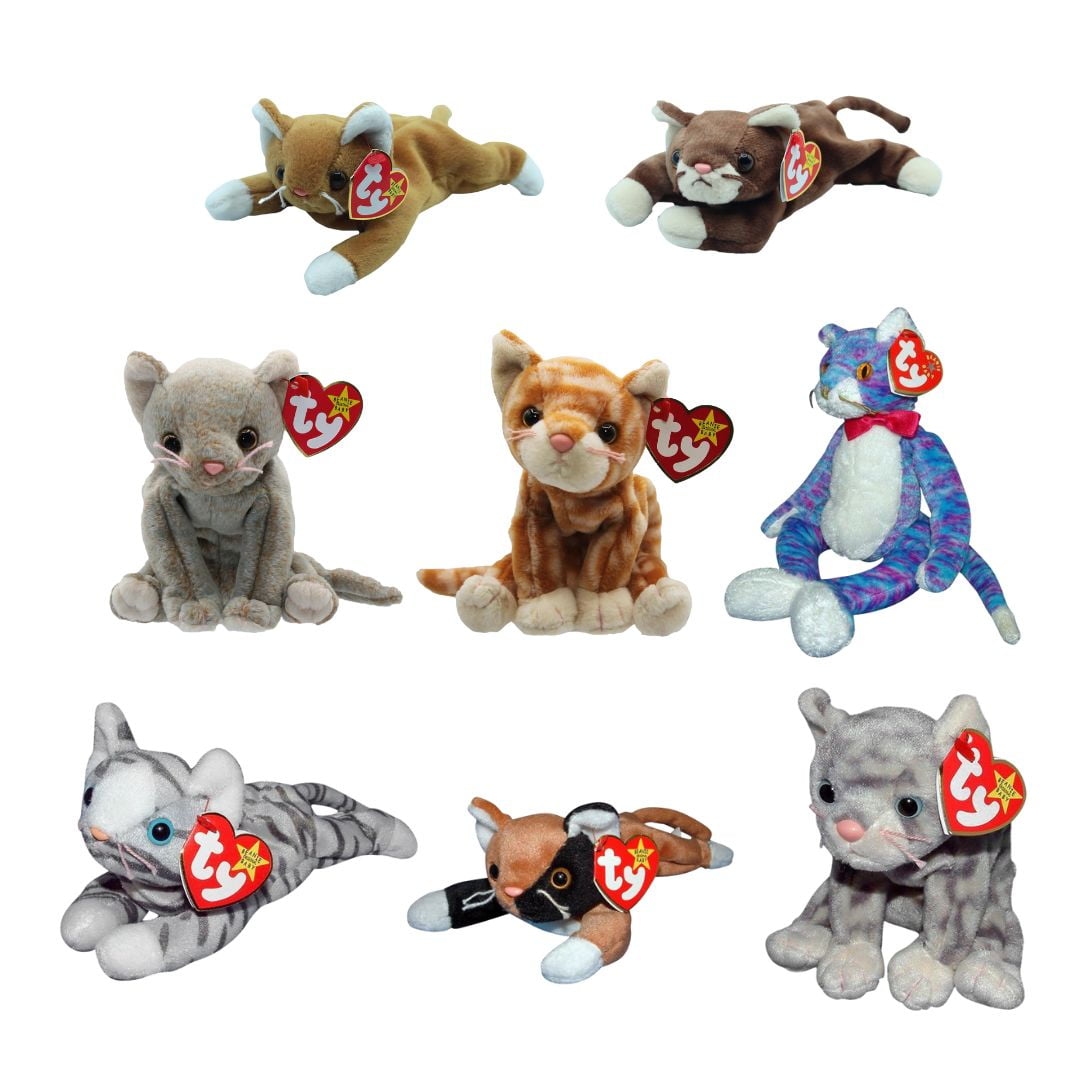
Ty Beanie Babies: A Nostalgic Dive into the Plush Phenomenon
In the annals of childhood memories, Ty Beanie Babies hold a cherished place, evoking a time of innocence, collecting, and the allure of the unknown. These adorable plush creatures, with their signature big eyes and endearing personalities, captured the hearts of millions worldwide, becoming a cultural phenomenon that transcended generations.
The Birth of a Bean-Filled Empire
The story of Ty Beanie Babies begins in 1993, when H. Ty Warner, a businessman with a passion for plush toys, founded Ty Inc. in Oak Brook, Illinois. Inspired by his childhood love for stuffed animals, Warner set out to create a line of high-quality, collectible plush toys that would appeal to both children and adults.
The first Beanie Baby, a brown bear named Valentino, was released in 1993. It was an instant success, and the line quickly expanded to include a wide range of animals, from the classic teddy bear to exotic creatures like the platypus and the koala.
The Secret to Their Success
What made Ty Beanie Babies so special? Several factors contributed to their immense popularity:
-
High-Quality Materials: Beanie Babies were made from soft, durable materials, ensuring their longevity and appeal to both children and collectors.
-
Unique Designs: Each Beanie Baby had its own distinct personality and design, making them highly collectible and sought-after.
-
Limited Production: Ty Inc. intentionally limited the production of each Beanie Baby, creating a sense of exclusivity and increasing their value.
-
Word-of-Mouth Marketing: The popularity of Beanie Babies spread primarily through word-of-mouth, as collectors shared their excitement and enthusiasm with others.
The Beanie Baby Craze
In the mid-1990s, Ty Beanie Babies became a full-blown craze. Collectors lined up for hours at stores to get their hands on the latest releases, and the secondary market for Beanie Babies exploded. Some rare and limited-edition Beanie Babies sold for thousands of dollars, fueling the frenzy even further.
The Beanie Baby craze reached its peak in 1997, when the company released Princess Diana Bear, a commemorative bear honoring the late Princess of Wales. The bear sold out within hours, and its value skyrocketed to over $100,000.
The Beanie Baby Bubble Bursts
However, the Beanie Baby bubble could not sustain its rapid growth indefinitely. In 1999, Ty Inc. announced that it would stop producing Beanie Babies, leading to a sharp decline in their value. Many collectors who had invested heavily in Beanie Babies lost significant amounts of money.
The Legacy of Beanie Babies
Despite the bursting of the Beanie Baby bubble, the plush toys remain a beloved part of childhood and collecting. They have inspired countless spin-offs, imitations, and other collectible plush lines.
The Ty Beanie Baby phenomenon taught valuable lessons about the power of nostalgia, the allure of collecting, and the importance of managing expectations. It also left an enduring legacy of adorable plush creatures that continue to bring joy to children and collectors alike.
The Beanie Baby Phenomenon in Popular Culture
The Beanie Baby craze had a significant impact on popular culture, inspiring numerous references in movies, TV shows, and music.
-
In the 1999 film "Toy Story 2," the character of Wheezy the Penguin is a Beanie Baby who is accidentally left behind by his owner.
-
The 1999 song "Beanie Baby" by the band Aqua became a worldwide hit, poking fun at the Beanie Baby craze.
-
In the 2004 film "Mean Girls," the character of Regina George uses Beanie Babies as a way to manipulate her friends.
The Beanie Baby Market Today
While the Beanie Baby craze may have subsided, the market for these plush toys remains active. Rare and limited-edition Beanie Babies can still fetch high prices, especially among collectors.
However, it is important to note that the value of Beanie Babies has fluctuated significantly over the years. Collectors should do their research and consult with experts before making any significant investments.
Collecting Beanie Babies
For those interested in collecting Beanie Babies, there are several things to keep in mind:
-
Condition: The condition of a Beanie Baby is crucial to its value. Look for toys that are in mint condition, with no tears, stains, or other damage.
-
Rarity: Some Beanie Babies were produced in smaller quantities than others, making them more valuable. Check the production numbers on the tags to determine the rarity of a particular toy.
-
Errors: Beanie Babies with errors, such as misspellings on the tags or incorrect colors, can also be more valuable.
-
Packaging: The original packaging can add value to a Beanie Baby. Keep the toys in their original boxes or bags to protect them from damage.
Conclusion
Ty Beanie Babies are a nostalgic reminder of a time when plush toys captured the hearts of millions. Their unique designs, high-quality materials, and limited production made them a collectible phenomenon that continues to resonate today.
While the Beanie Baby craze may have subsided, the legacy of these adorable plush creatures lives on. They remain a beloved part of childhood and collecting, bringing joy to generations of children and adults alike.
